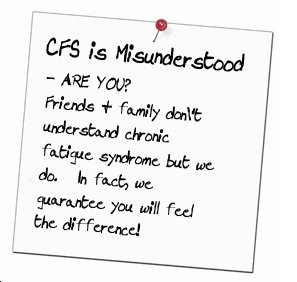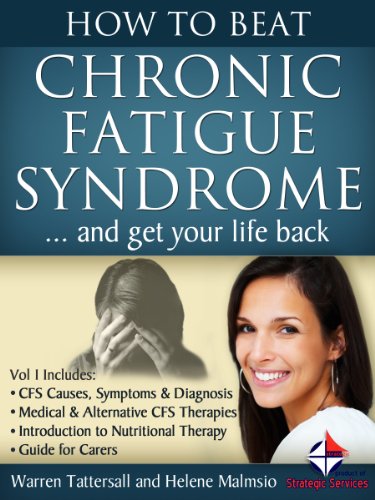Arthritis Series Part II: Most Common Types Of Arthritis Discussed
Rheumatoid Arthritis
Rheumatoid arthritis is characterized by an inflammation of the joints with marked swelling and redness. It is a perplexing condition to treat because it is an autoimmune disorder. In RA, anti-bodies attack your own body cells; this includes your joints, lungs, liver, and kidneys.
As anti-bodies attack the synovial lining of your joints, this would elicit an inflammatory response. This can irritate the cartilage, eventually breaking up its surface and thinning it down.
Once this starts, the space in between the bones will narrow and will result to inflammation of the joint lining. The increased size of the joint lining will cause it to invade the space of the other joint and erode the bone surface.
Cause
Rheumatoid arthritis occurs when your immune system starts to attack the lining of your joints. It is still unknown how or why this process occurs. However, genetic predisposition is seen as a major factor that predisposes a person to rheumatoid arthritis.
It is observed that an onset of a severe infection can trigger the immune system to attack the linings of the joints and other body organs.
Classification of Rheumatoid Arthritis
The American College of Rheumatology created a system of classifying rheumatoid arthritis basing on the x-ray of affected joints. This classification helps medical professionals to categorize rheumatoid arthritis according to its severity, but it is not used as a basis for treatment for rheumatoid arthritis.
Most practitioners believe that early management of rheumatoid arthritis before the onset of severe symptoms can prevent further deterioration of the joints and increase the chance of rehabilitation.
I. Stage I: there may be signs of bone erosion, but with no damage to the joints.
II. Stage II:
a. evidence of bone thinning is present that may or may not be accompanied by minimal bone damage.
b. Possible damage to cartilage, although minimal.
c. Limited joint mobility with absence of joint deformities.
d. Muscular atrophy of nearby muscles.
e. Possible presence of surrounding soft tissue abnormalities
III. Stage III
a. Noted cartilage and bone damage, plus bone thinning around the joint on x-ray
b. Presence of joint deformity with temporary stiffening of fixation on the joint.
c. Marked atrophy of surrounding muscle
d. Soft tissue abnormalities around the joint are probable
IV. Stage IV:
a. Cartilage and bone damage is seen around the join on x-ray as well as osteoporosis
b. Presence of ankylosis (the joint is deformed and permanently fixated)
c. Marked atrophy of surrounding muscle
d. Possible adjacent soft tissue abnormalities
Signs and Symptoms
The signs and symptoms of rheumatoid arthritis can come and go. When the symptoms disappear, this is called remission. The patient can feel quite well for several weeks, months, and even years.
This can happen either with the presence or absence of treatment. But when rheumatoid arthritis goes back, termed as relapse, the symptoms will start to appear again. Flare is considered present when all of the signs and symptoms of rheumatoid arthritis is noted.
Localized signs and symptoms
When rheumatoid arthritis attacks, the patient will notice the following in reference to the affected joint:
Morning stiffness that can last for up to 3 hours accompanied by swelling, pain, and redness.
Stiffness that occur during prolonged periods of inactivity.
Heberden’s Nodes: these are subcutaneous nodules that cause the deformity of small joints at the ends of the fingers.
On rare occasions, when the cricoarytenoid joint is affected or inflamed, voice becomes hoarse. Reason is the cricoarytenoid joint helps to modulate voice tone.
Systemic Signs and Symptoms
Because rheumatoid arthritis is an autoimmune disorder, it can also represent generalized or systemic signs and symptoms. These symptoms can be of:
Sjorgren’s syndrome: this is the dryness of the eyes and mouth due to inflammation of glands that lubricate the oral and ocular mucosa.
Pleuritis: the antibodies also attack the lining of the lungs, causing
o Sharp chest pain during inhalation
o Shortness of breath or difficulty f breathing
o Coughing
Pneumonitis: the lungs can also become inflamed, with presence of rheumatoid nodules and even scarring.
Pericarditis: the lining that surrounds the heart can also be affected, leading to chest pain while leaning forward or lying down.
Anemia: the inflamed tissues secrete cytokines and several other protein compounds that affect the production of erythropoietin in the kidneys. Erythropoietin is responsible for stimulating the bone marrow to produce new red blood cells that die after 120 days. Because of this, anemia in rheumatoid arthritis is the most prevalent of all systemic symptoms of rheumatoid arthritis, which can lead to:
o Loss of appetite
o Fatigue
o Malaise
Vasculitis: this is a rare, but very serious complication due to prolonged rheumatoid disease. The blood vessel lining becomes inflamed, causing impairment of blood supply to the peripheral tissues that can lead to tissue necrosis (death). This is manifested by small black areas around the nail beds or as leg ulcers that can lead to gangrene and ultimately amputation of a limb.
Diagnosis
X-ray is done to see the extent of bone damage on the affected joints. Blood tests such as ANA and anti-CCP will be done to detect the presence of antibodies that cause rheumatoid arthritis. The erythrocyte sedimentation rate is a test to roughly determine the extensiveness of joint inflammation.
The C-reactive protein, on the other hand, measures the degree of inflammation in the body when systemic signs and symptoms of rheumatoid disease is present. BUN and Creatinine clearance will also be done to determine if there is kidney affectation, and to see if the kidneys can handle any aggressive medical treatment that will be prescribed to treat rheumatoid arthritis.
Treatment
There are no conclusive treatments yet for rheumatoid arthritis. Most treatment is aimed to limit the progression of bone destruction as well as to address the signs and symptoms of rheumatoid arthritis such as pain, redness, and swelling.
Home Therapy
Non-vigorous exercise can help you lessen the progression of stiffness and weakness of muscles around your joints. This can include walking around the park for a short period of time, interspersed with rest. Swimming and water aerobics can also help you maintain muscle tone without needlessly tiring you or putting pressure on your joints. If your joints are tender and inflamed, hold of exercising for a while.
To ease the pain and promote mobility, take a hot shower or a hot bath for 15 minutes. To help lessen the pain, place an ice compress on a tender and inflamed joint. However, this is not advisable when you have signs of poor circulation such as paleness, tingling sensation, a difference in temperature as in the affected extremity is colder than the other.
Stress can also worsen your symptoms, so make it a point to rest every now and then. Lessen your workload, and as much as possible delegate tasks to other people you can trust so you won’t have to worry about not accomplishing a project.
Learn as much as you can about the disease by subscribing to journals and reading related literature about your condition. Always maintain your scheduled appointment, and actively search for ways help you cope with rheumatoid arthritis.
Medication
NSAIDs can help lessen the pain and inflammation. These can be bought over-the-counter, but must be used with caution. Prolonged use can cause tinnitus (ringing in the ears), bruising due to decreased clotting ability of the blood, gastric ulcers, liver, and kidney problems.
Steroids will be prescribed to decrease the inflammation brought about by rheumatoid disease. This is given to relieve acute symptoms and should not be used for a long time. Do not abruptly discontinue your medication. Inform your doctor if you are not compatible with the regimen so he can help you taper your dose until your body is used to the absence of the medication.
Disease modifying antirheumatic drugs (DMARDs) will lessen the rate of progression of rheumatoid arthritis. Methotrexate is the first drug of choice among DMARDs for you don’t need to wait long to experience its effect.
It is effective in lessening the signs and symptoms of rheumatoid arthritis, and can slow down or halt the progression of radiographic damage. Most patients continue to use it for years because of its better efficacy and low cost compared to leflunomide and sulfasalazine.
Surgery
If conventional and pharmaceutical treatments fail to lessen the symptoms and halt the progression of rheumatoid arthritis, surgery may be considered by your doctor. Surgery is done to lessen pain, fix joint deformities, and restore function to your joints.
One type of surgical treatment is arthroplasy. The surgeon removes the damaged areas on your joints, and replaces is totally with a prosthesis that is either made up of metal or plastic. If the inflammation has also affected the tendons around your joints, your surgeon may have to perform tendon repair to bring back mobility to our joints. Synovectomy is a procedure where the lining of the affected joint is removed due to severe inflammation and pain.
Remember that when you enter a treatment regimen for rheumatoid arthritis, your aim is to control the signs and symptoms, diminish damage to your joints, and prevent onset of disability. If your current choice of regimen is not working for you, contact your physician so you can discuss other forms of alternative to help you deal with rheumatoid arthritis.
the A to Z directory of dealing with Health Problems & Self Care Strategies for natural remedies to your health issues.

Subscribe to get your weekly "Health Success Magazine" with a new complete & comprehensive Health Report in every edition!

to “Your Health Success”
our weekly F’R’E’E’ Newsletter
If you would like a free no-obligation private consultation or to contact Warren Tattersall for more information, please click here >> Contact Us

Click the books above to learn more about how we treat CFS naturally, to get your life back!
You will find many assorted Health Reports available for download free to you on this website!
Our free Health Success Reports are each available for you to download when you subscribe to receive them and their 7 part eCourse.
You can unsubscribe at any time, but we are sure you will want to receive all the email lessons of these informative ecourses.
Read more HERE to select the REPORT subjects of most interest (or concern) to you.









